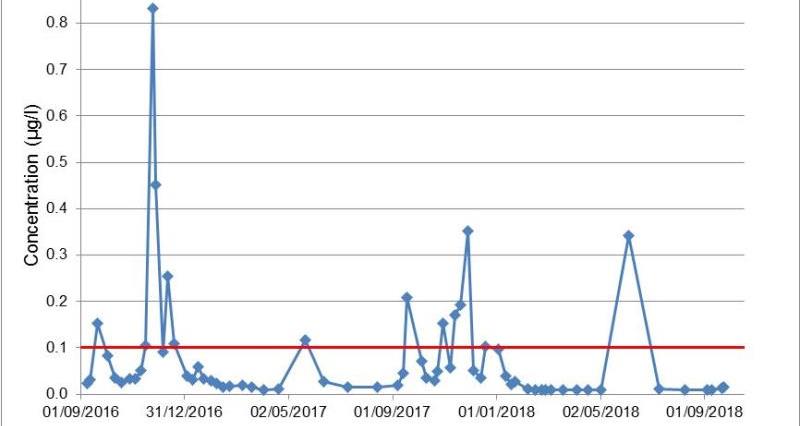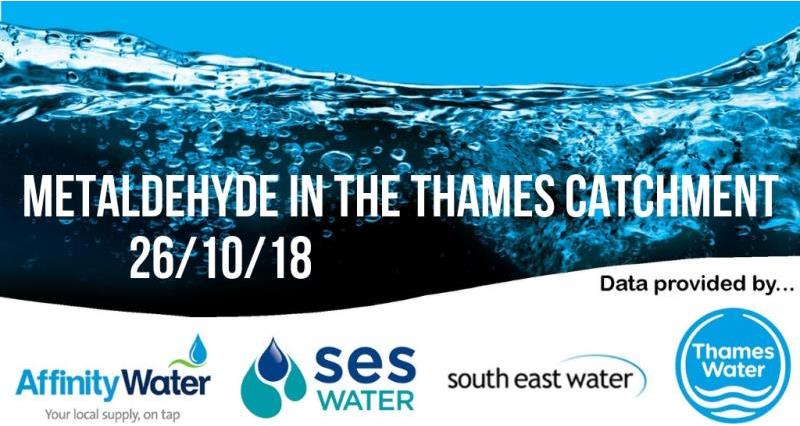Metaldehyde in the catchment
This autumn consider reducing reliance on chemical control measures by adopting a wider range of options in your Integrated Pest Management (IPM) programme to control slug numbers. If you need to use chemical control this autumn, please consider the use of ferric phosphate pellets instead of metaldehyde pellets and, as always, follow best practice guidelines. In some areas there are water company funded initiatives available to support you, so contact your local water company to find out more. Please note that contact details can be found at the bottom of this update.
Please see the map and graph below for monitoring data at 12 locations within the Thames catchment.
Latest Results
Metaldehyde concentrations have remained below the drinking water standard at all 12 sites this week. This was despite significant rainfall on the 14th October (up to 30mm in some areas of the catchment). The only significant change recorded this week was at Thames at Hurley with a concentration of 0.049µg/l, just below half of the drinking water standard. Please follow best practice if using any form of chemical slug control this autumn (www.getpelletwise.co.uk).

Focus on….. Thame at Cuddesdon
So far this autumn metaldehyde concentrations have remained below the drinking water standard of 0.1µg/l. Historically, metaldehyde concentrations have been particularly high in the Thame at Cuddesdon with regular exceedances every autumn and a maximum recorded concentration of 2.98µg/l in 2012. In autumn 2017 six samples exceeded the drinking water standard, peaking at 0.352µg/l in November. Concentrations were low for most of the spring and summer, and the dry weather meant that river levels were relatively low over that period. However, localised heavy rainfall in June resulted in runoff and a spike of 0.342µg/l was detected. It is likely that a lack of dilution due to the low river levels had a part to play in the result observed.

To find out more please contact:
Affinity Water: Q2F0Y2htZW50TWFuYWdlbWVudEBhZmZpbml0eXdhdGVyLmNvLnVr, SES Water: Y2F0Y2htZW50QHNlc3dhdGVyLmNvLnVr, South East Water: Y2F0Y2htZW50QHNvdXRoZWFzdHdhdGVyLmNvLnVr or Thames Water: Y2F0Y2htZW50Lm1hbmFnZW1lbnRAdGhhbWVzd2F0ZXIuY28udWs=
